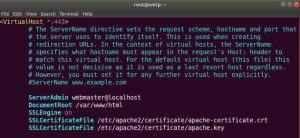
#Openssl read cert serial number
Please note that the choice of “1” as a serial number is considered a security flaw for real certificates. To do so, we need to generate a key first. Creating a root CA certificate and an end-entity certificateįirst, we need to create a “self-signed” root certificate.

The ::OpenSSL::X509 module provides the tools to set up an independent PKI, similar to scenarios where the 'openssl' command line tool is used for issuing certificates in a private PKI.

The public key infrastructure (PKI) model relies on trusted certificate authorities (“root CAs”) that issue these certificates, so that end users need to base their trust just on a selected few authorities that themselves again vouch for subordinate CAs issuing their certificates to end users. Certificates are typically used to be able to associate some form of identity with a key pair, for example web servers serving pages over HTTPs use certificates to authenticate themselves to the user. X.509 certificates are associated with a private/public key pair, typically a RSA, DSA or ECC key (see also ::OpenSSL::PKey::RSA, ::OpenSSL::PKey::DSA and ::OpenSSL::PKey::EC), the public key itself is stored within the certificate and can be accessed in form of an ::OpenSSL::PKey. new raw Saving a certificate to a fileĪ certificate may be encoded in DER format cert =. read " cert.cer " # DER- or PEM-encodedĬertificate = OpenSSL :: X509 :: Certificate. Reading a certificate from a fileĬertificate is capable of handling DER-encoded certificates and certificates encoded in OpenSSL's PEM format. Provides access to a certificate's attributes and allows certificates to be read from a string, but also supports the creation of new certificates from scratch. Implementation of an X.509 certificate as specified in RFC 5280.


 0 kommentar(er)
0 kommentar(er)
